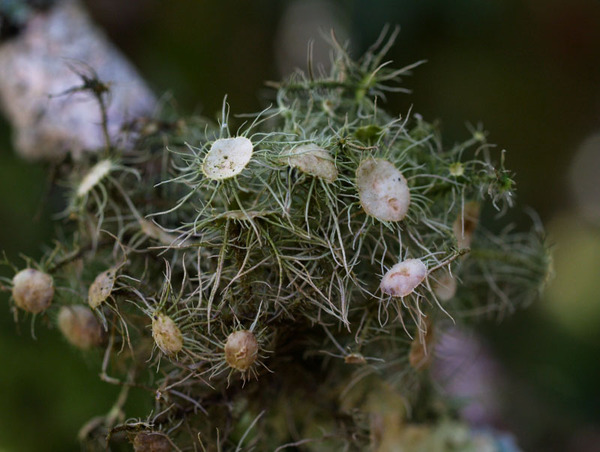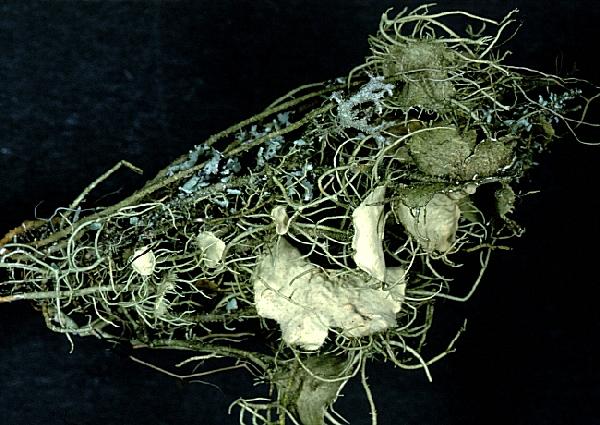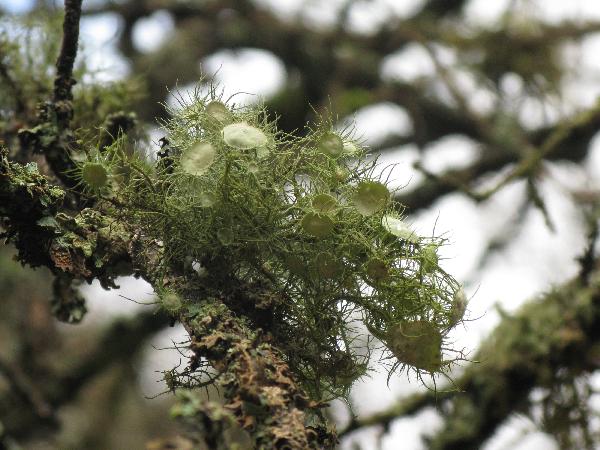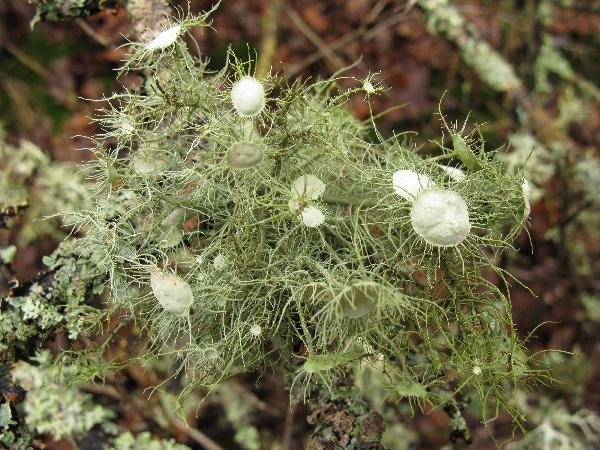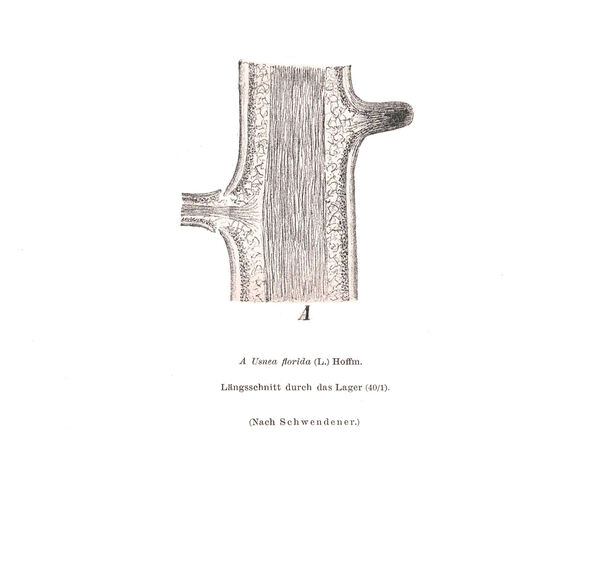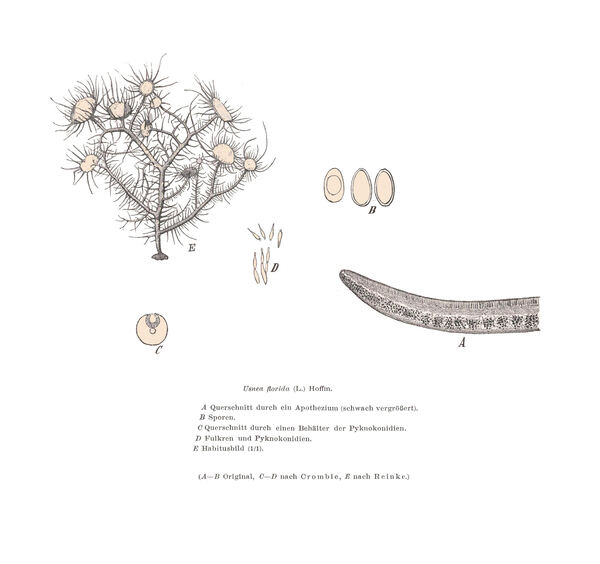Usnea florida (L.) F.H. Wigg.
Primit. Florae Holsat., 2: 7, 1780. Basionym: Lichen floridus L. - Sp. Pl., 2: 1156, 1753.
Synonyms: Usnea barbata var. florida (L.) Fr.; Usnea florida subsp. arbuscula Motyka; Usnea florida subsp. pseudostrigosa Motyka; Usnea tominii Räsänen
Distribution: N - Frl (Tretiach & Molaro 2007, Tomasi 2007), Ven (Caniglia & al. 1999, Nascimbene & Marini 2007, Nascimbene 2008c), TAA (Nascimbene 2001b, 2003, 2014, Thor & Nascimbene 2007, Nascimbene & al. 2007b, 2014, 2022, Nascimbene & Marini 2015, Nimis & al. 2015, Trindade & al. 2021), Lomb (Alessio & al. 1995, Tretiach 1996, Gheza 2019), Piem (Isocrono & al. 2004), VA (Piervittori & Isocrono 1999, Matteucci & al. 2008c), Emil (Fariselli & al. 2020), Lig (Giordani & Incerti 2008). C - Tosc (Tretiach & Ganis 1999, Loppi & Putortì 2001), Umbr (Ravera & al. 2022), Laz, Abr, Sar. S - Camp, Pugl, Bas (Potenza 2006, Potenza & Fascetti 2012), Cal (Puntillo 1996), Si (Falco Scampatelli 2005).
Description: Thallus fruticose-filamentous, greenish, shrubby to subpendulous, 2-10 cm long, branching both isotomic- and anisotomic-dichotomously, the basal part usually not distinctly constricted, blackened on 2-5 mm, often with distinct annulations. Branches progressively tapering towards the tips; lateral branches not constricted at attachment point, main branches with numerous and conspicuous white rings, papillae and tubercles. Fibrils slender, 1-6 mm long, mostly arising at right angles from branches and becoming curved. Cortex thick, (7-)9-13(-17) % of total branch thickness, matt in longitudinal section; medulla white, thin (11-20 %) dense to compact; central axis white, moderately thick (38-54 %); ratio axis/medulla ranging between 0.8 and 6. Apothecia common, numerous on terminal and lateral branches, zeorine, up to 2 cm across, the margins with numerous, radiating marginal fibrils; the disc P+ yellow, the margin P+ red. Asci 8-spored, elongate-clavate, Lecanora-type. Ascospores simple, hyaline, ellipsoid, 8.5-11 x 5.5-7 µm. Photobiont chlorococcoid. Spot tests and chemistry: cortex K-, C-, KC-, P-, with usnic acid; medulla with 2 chemotypes in Europe: 1) K+ bright yellow slowly turning orange, KC- or KC+ pink, P+ orange, with thamnolic acid (major) ± alectorialic and bourgeanic acids, apothecial disc K+ yellow, KC+ red, P+ yellow; 2) K-, KC- or KC+ pink, P-, with squamatic acid (major), ± alectorialic, ± bourgeanic acids, apothecial disc K-, P-. Chemotype 1) is the most frequent.Note: a boreal-montane to cool-temperate lichen found in forests with frequent fog, on twigs and branches, with optimum in the upper montane and subalpine belts, from the Alps to the mountains of Sicily; several records from Southern Italy, however, require confirmation. An earlier record from Venezia Giulia (see Nimis 1993: 724) is excluded, as it was from Slovenian territory. Molecular data did not support the distinction between the fertile U. florida and the sorediate U. subfloridana (Articus & al. 2002, see also Degtjarenko & al. 2020), but here we prefer to maintain them as distinct, due both to their different ecology and to the fact that population genomic analyses of RAD-sequences (Graewe & al. 2018) allowed to clearly distinguish two species in a similar case concerning two species of Antarctic Usnea.
Growth form: Fruticose filamentous
Substrata: bark
Photobiont: green algae other than Trentepohlia
Reproductive strategy: mainly sexual
Commonnes-rarity: (info)
Alpine belt: absent
Subalpine belt: common
Oromediterranean belt: absent
Montane belt: rather common
Submediterranean belt: extremely rare
Padanian area: absent
Humid submediterranean belt: extremely rare
Humid mediterranean belt: absent
Dry mediterranean belt: absent
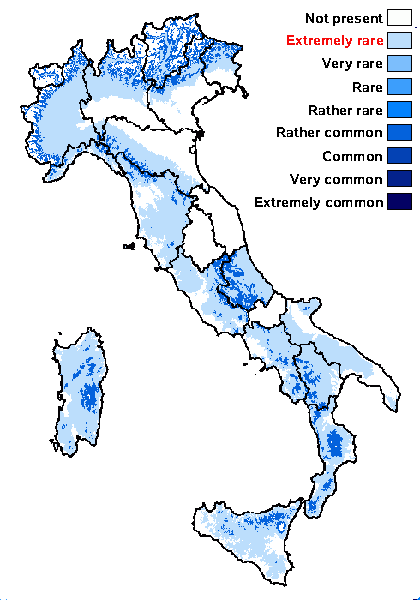
Predictive model
Herbarium samples
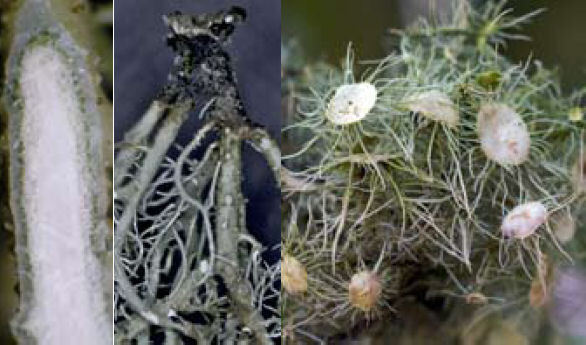
Tiiu Tõrra; Owner: Tiiu Tõrra - Institute of Ecology and Earth Sciences, University of Tartu, Estonia


P.L. Nimis; Owner: Department of Life Sciences, University of Trieste
Herbarium: TSB (10874)
2001/12/12
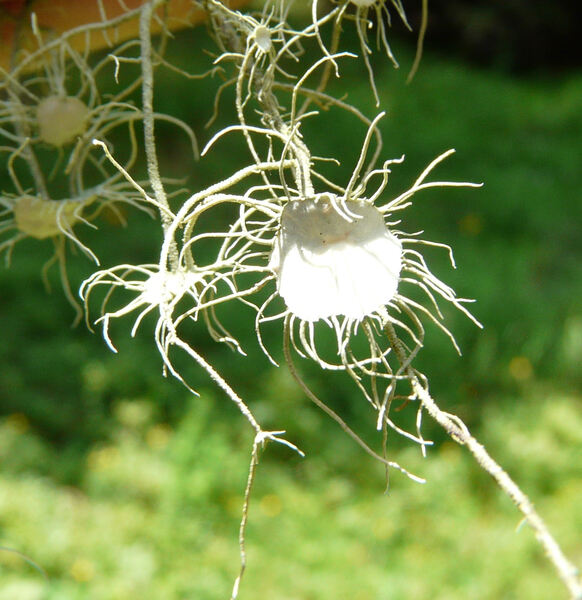

Andrea Moro; Owner: Department of Life Sciences, University of Trieste
Italia, Veneto, BL, Comune di Sappada, pendici boscose del Monte Peralba.
2008.27.08
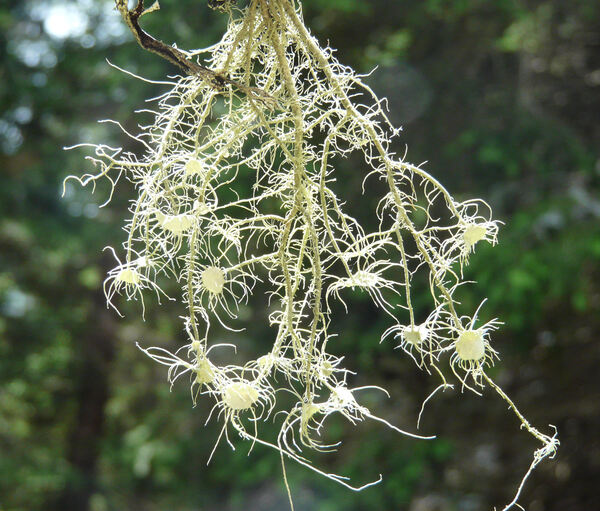

Andrea Moro; Owner: Department of Life Sciences, University of Trieste
Italia, Veneto, BL, Comune di Sappada, pendici boscose del Monte Peralba.
2008.27.08
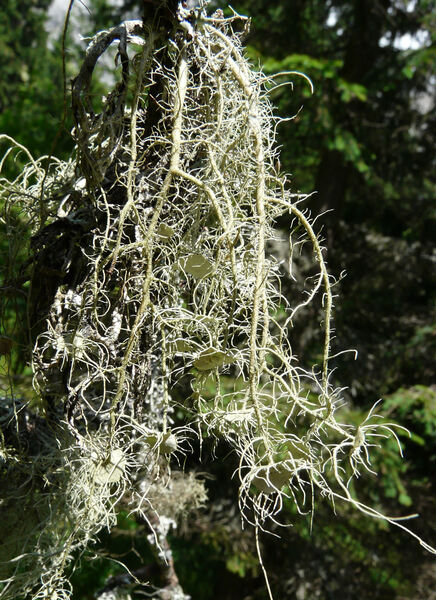

Andrea Moro; Owner: Department of Life Sciences, University of Trieste
Italia, Veneto, BL, Comune di Sappada, pendici boscose del Monte Peralba.
2008.27.08
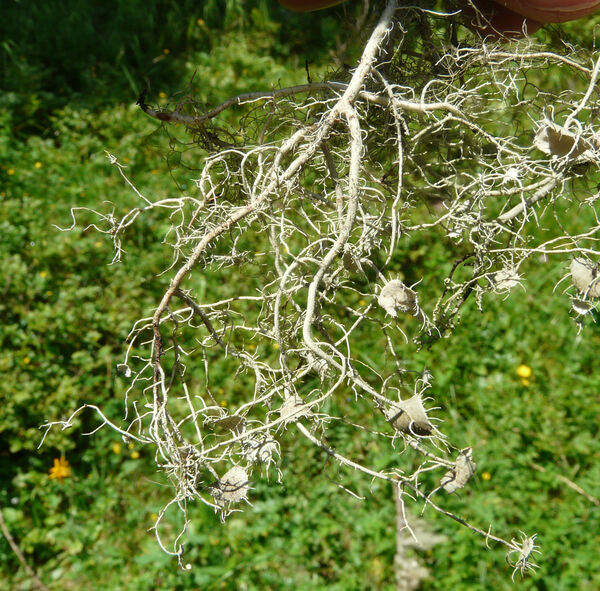

Andrea Moro; Owner: Department of Life Sciences, University of Trieste
Italia, Veneto, BL, Comune di Sappada, pendici boscose del Monte Peralba.
2008.27.08
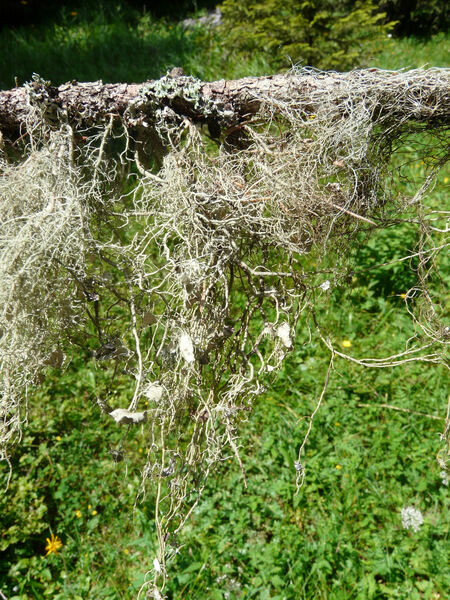

Andrea Moro; Owner: Department of Life Sciences, University of Trieste
Italia, Veneto, BL, Comune di Sappada, pendici boscose del Monte Peralba.
2008.27.08


Andrea Moro; Owner: Department of Life Sciences, University of Trieste
Italia, Veneto, BL, Comune di Sappada, pendici boscose del Monte Peralba.
2008.27.08

Tiiu Tõrra; Owner: Tiiu Tõrra - Institute of Ecology and Earth Sciences, University of Tartu, Estonia
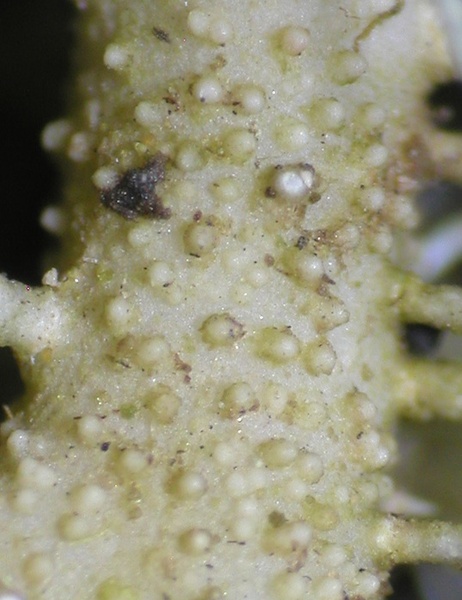
Tiiu Tõrra; Owner: Tiiu Tõrra - Institute of Ecology and Earth Sciences, University of Tartu, Estonia
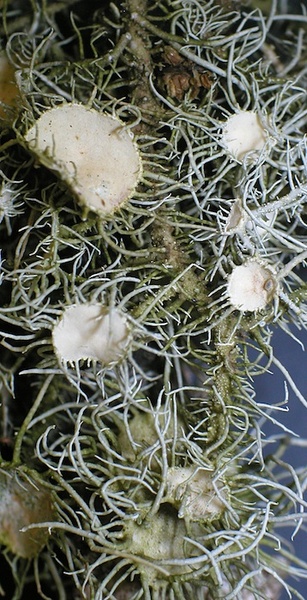
Tiiu Tõrra; Owner: Tiiu Tõrra - Institute of Ecology and Earth Sciences, University of Tartu, Estonia
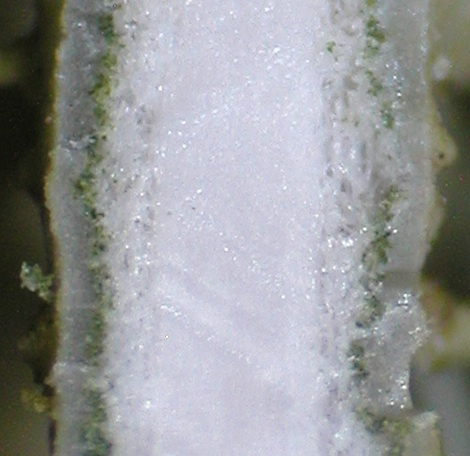
Tiiu Tõrra; Owner: Tiiu Tõrra - Institute of Ecology and Earth Sciences, University of Tartu, Estonia
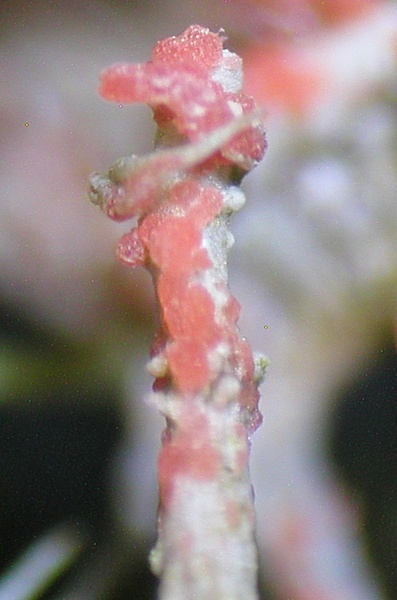
Tiiu Tõrra; Owner: Tiiu Tõrra - Institute of Ecology and Earth Sciences, University of Tartu, Estonia
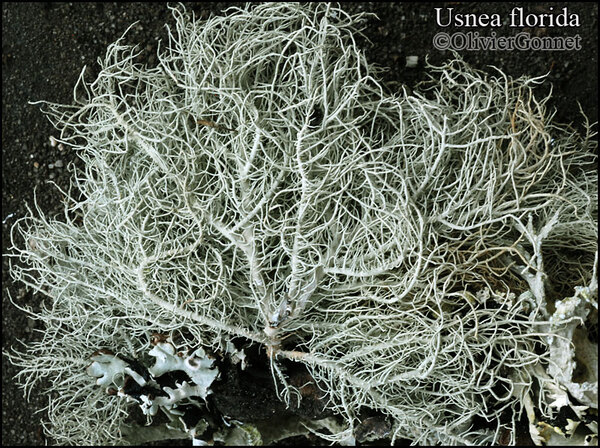
Courtesy Danièle et Olivier Gonnet - Source: https://www.afl-lichenologie.fr/Photos_AFL/Photos_AFL_U/Usnea_florida.htm
France, session AFL 2015 dans le Lot

Courtesy Danièle et Olivier Gonnet - Source: https://www.afl-lichenologie.fr/Photos_AFL/Photos_AFL_U/Usnea_florida.htm
France, session AFL 2015 dans le Lot

Courtesy Danièle et Olivier Gonnet - Source: https://www.afl-lichenologie.fr/Photos_AFL/Photos_AFL_U/Usnea_florida.htm
France, session AFL 2015 dans le Lot
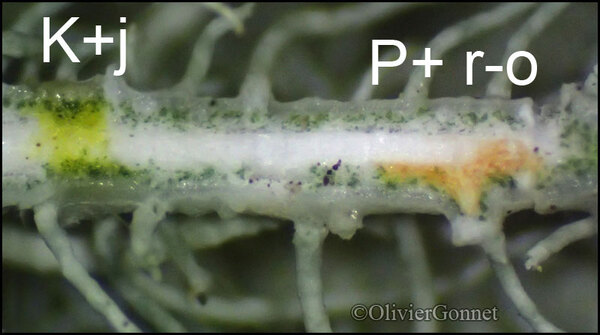
Courtesy Danièle et Olivier Gonnet - Source: https://www.afl-lichenologie.fr/Photos_AFL/Photos_AFL_U/Usnea_florida.htm
France, session AFL 2015 dans le Lot
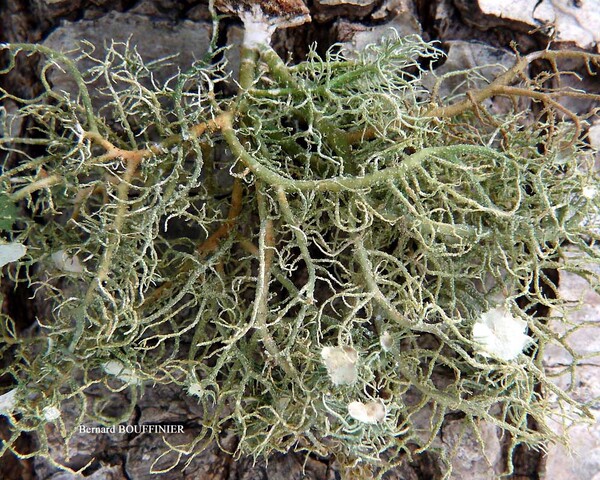
Bernard Bouffinier - Source: http://www.lichensmaritimes.org/index.php?task=fiche&lichen=357&lang=en
Spain, Landevennec
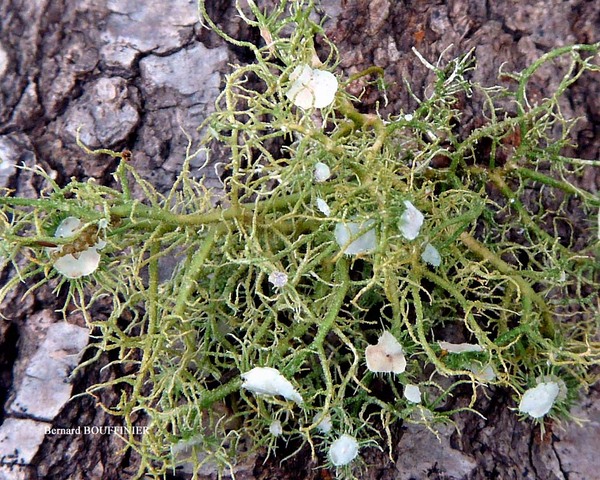
Bernard Bouffinier - Source: http://www.lichensmaritimes.org/index.php?task=fiche&lichen=357&lang=en
France, Landevennec
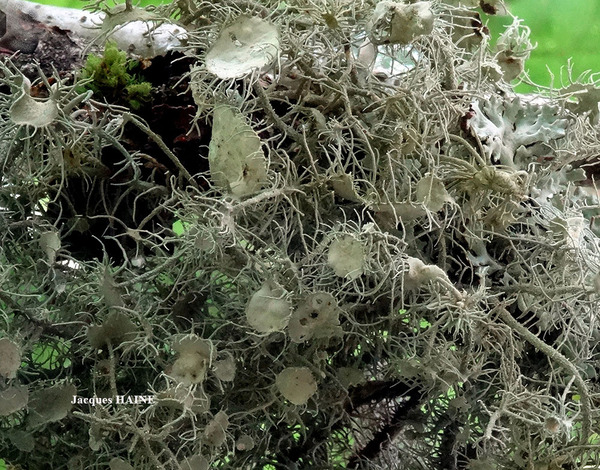
Jacques Haine - Source: http://www.lichensmaritimes.org/index.php?task=fiche&lichen=357&lang=en
France, Drôme provençale
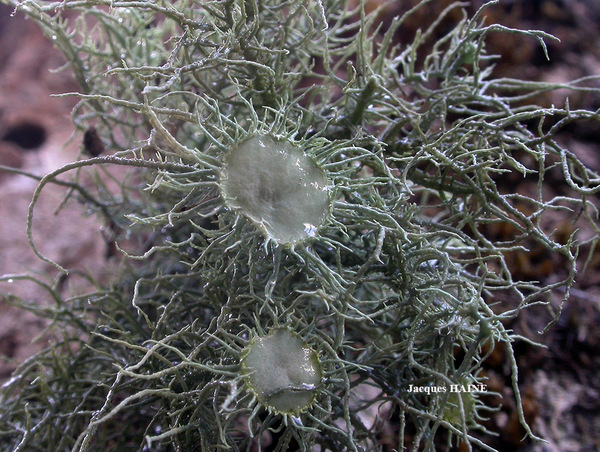
Jacques Haine - Source: http://www.lichensmaritimes.org/index.php?task=fiche&lichen=357&lang=en
France, Drôme provençale
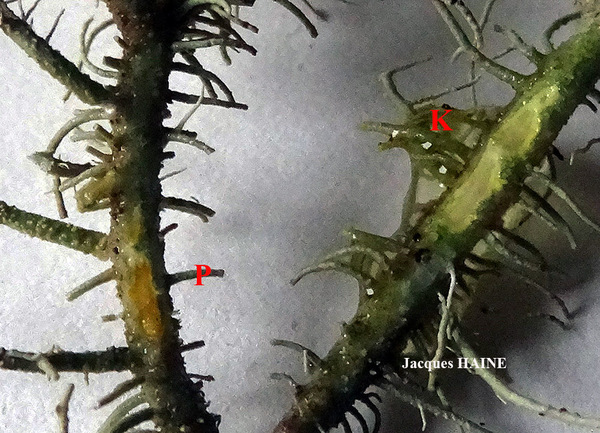
Jacques Haine - Source: http://www.lichensmaritimes.org/index.php?task=fiche&lichen=357&lang=en
France

Jacques Haine - Source: http://www.lichensmaritimes.org/index.php?task=fiche&lichen=357&lang=en
France
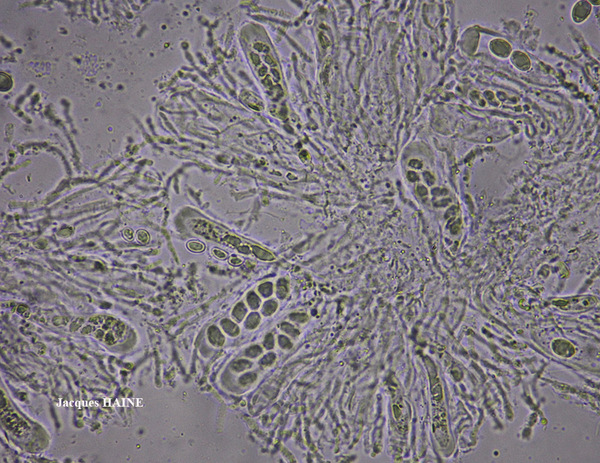
Jacques Haine - Source: http://www.lichensmaritimes.org/index.php?task=fiche&lichen=357&lang=en
France
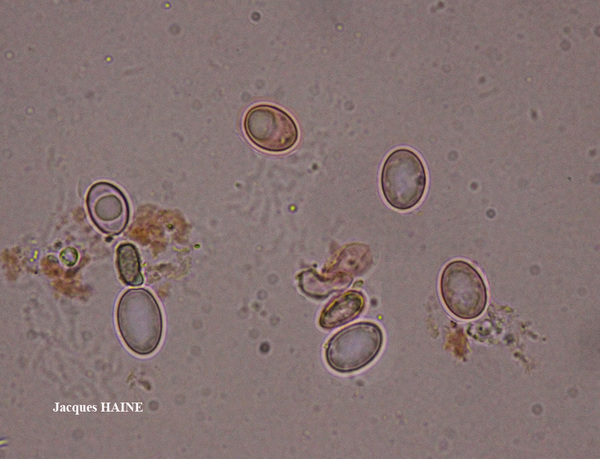
Jacques Haine - Source: http://www.lichensmaritimes.org/index.php?task=fiche&lichen=357&lang=en
France

Collezione lichenologica Abramo Massalongo del Museo di Storia Naturale G. Ligabue di Venezia - Autori: Seggi, Linda; Trabucco, Raffaella Proprietà: Fondazione Musei Civici di Venezia - CC BY-NC
Italy, Veneto, in nem. Cansiglio 1855

Collezione lichenologica Abramo Massalongo del Museo di Storia Naturale G. Ligabue di Venezia - Autori: Seggi, Linda; Trabucco, Raffaella Proprietà: Fondazione Musei Civici di Venezia - CC BY-NC
Italy, Veneto, in nem. Cansiglio 1855

Collezione lichenologica Abramo Massalongo del Museo di Storia Naturale G. Ligabue di Venezia - Autori: Seggi, Linda; Trabucco, Raffaella Proprietà: Fondazione Musei Civici di Venezia - CC BY-NC
Italy, Veneto, in nem. Cansiglio 1855

Collezione lichenologica Abramo Massalongo del Museo di Storia Naturale G. Ligabue di Venezia - Autori: Seggi, Linda; Trabucco, Raffaella Proprietà: Fondazione Musei Civici di Venezia - CC BY-NC
Italy, Veneto, in nem. Cansiglio 1855
Growth form: Fruticose filamentous
Substrata: bark
Photobiont: green algae other than Trentepohlia
Reproductive strategy: mainly sexual
Commonnes-rarity: (info)
Alpine belt: absent
Subalpine belt: common
Oromediterranean belt: absent
Montane belt: rather common
Submediterranean belt: extremely rare
Padanian area: absent
Humid submediterranean belt: extremely rare
Humid mediterranean belt: absent
Dry mediterranean belt: absent

Predictive model
| Herbarium samples |

Tiiu Tõrra; Owner: Tiiu Tõrra - Institute of Ecology and Earth Sciences, University of Tartu, Estonia


P.L. Nimis; Owner: Department of Life Sciences, University of Trieste
Herbarium: TSB (10874)
2001/12/12


Andrea Moro; Owner: Department of Life Sciences, University of Trieste
Italia, Veneto, BL, Comune di Sappada, pendici boscose del Monte Peralba.
2008.27.08


Andrea Moro; Owner: Department of Life Sciences, University of Trieste
Italia, Veneto, BL, Comune di Sappada, pendici boscose del Monte Peralba.
2008.27.08


Andrea Moro; Owner: Department of Life Sciences, University of Trieste
Italia, Veneto, BL, Comune di Sappada, pendici boscose del Monte Peralba.
2008.27.08


Andrea Moro; Owner: Department of Life Sciences, University of Trieste
Italia, Veneto, BL, Comune di Sappada, pendici boscose del Monte Peralba.
2008.27.08


Andrea Moro; Owner: Department of Life Sciences, University of Trieste
Italia, Veneto, BL, Comune di Sappada, pendici boscose del Monte Peralba.
2008.27.08


Andrea Moro; Owner: Department of Life Sciences, University of Trieste
Italia, Veneto, BL, Comune di Sappada, pendici boscose del Monte Peralba.
2008.27.08

Tiiu Tõrra; Owner: Tiiu Tõrra - Institute of Ecology and Earth Sciences, University of Tartu, Estonia

Tiiu Tõrra; Owner: Tiiu Tõrra - Institute of Ecology and Earth Sciences, University of Tartu, Estonia

Tiiu Tõrra; Owner: Tiiu Tõrra - Institute of Ecology and Earth Sciences, University of Tartu, Estonia

Tiiu Tõrra; Owner: Tiiu Tõrra - Institute of Ecology and Earth Sciences, University of Tartu, Estonia

Tiiu Tõrra; Owner: Tiiu Tõrra - Institute of Ecology and Earth Sciences, University of Tartu, Estonia

Courtesy Danièle et Olivier Gonnet - Source: https://www.afl-lichenologie.fr/Photos_AFL/Photos_AFL_U/Usnea_florida.htm
France, session AFL 2015 dans le Lot

Courtesy Danièle et Olivier Gonnet - Source: https://www.afl-lichenologie.fr/Photos_AFL/Photos_AFL_U/Usnea_florida.htm
France, session AFL 2015 dans le Lot

Courtesy Danièle et Olivier Gonnet - Source: https://www.afl-lichenologie.fr/Photos_AFL/Photos_AFL_U/Usnea_florida.htm
France, session AFL 2015 dans le Lot

Courtesy Danièle et Olivier Gonnet - Source: https://www.afl-lichenologie.fr/Photos_AFL/Photos_AFL_U/Usnea_florida.htm
France, session AFL 2015 dans le Lot

Bernard Bouffinier - Source: http://www.lichensmaritimes.org/index.php?task=fiche&lichen=357&lang=en
Spain, Landevennec

Bernard Bouffinier - Source: http://www.lichensmaritimes.org/index.php?task=fiche&lichen=357&lang=en
France, Landevennec

Jacques Haine - Source: http://www.lichensmaritimes.org/index.php?task=fiche&lichen=357&lang=en
France, Drôme provençale

Jacques Haine - Source: http://www.lichensmaritimes.org/index.php?task=fiche&lichen=357&lang=en
France, Drôme provençale

Jacques Haine - Source: http://www.lichensmaritimes.org/index.php?task=fiche&lichen=357&lang=en
France

Jacques Haine - Source: http://www.lichensmaritimes.org/index.php?task=fiche&lichen=357&lang=en
France

Jacques Haine - Source: http://www.lichensmaritimes.org/index.php?task=fiche&lichen=357&lang=en
France

Jacques Haine - Source: http://www.lichensmaritimes.org/index.php?task=fiche&lichen=357&lang=en
France

Collezione lichenologica Abramo Massalongo del Museo di Storia Naturale G. Ligabue di Venezia - Autori: Seggi, Linda; Trabucco, Raffaella Proprietà: Fondazione Musei Civici di Venezia - CC BY-NC
Italy, Veneto, in nem. Cansiglio 1855

Collezione lichenologica Abramo Massalongo del Museo di Storia Naturale G. Ligabue di Venezia - Autori: Seggi, Linda; Trabucco, Raffaella Proprietà: Fondazione Musei Civici di Venezia - CC BY-NC
Italy, Veneto, in nem. Cansiglio 1855

Collezione lichenologica Abramo Massalongo del Museo di Storia Naturale G. Ligabue di Venezia - Autori: Seggi, Linda; Trabucco, Raffaella Proprietà: Fondazione Musei Civici di Venezia - CC BY-NC
Italy, Veneto, in nem. Cansiglio 1855

 INDEX FUNGORUM
INDEX FUNGORUM
 GBIF
GBIF
 DOLICHENS
DOLICHENS
